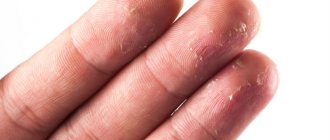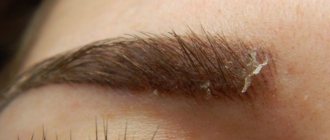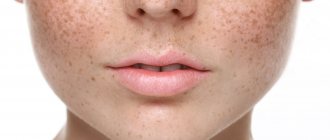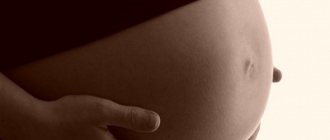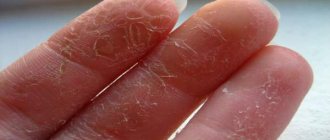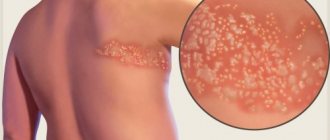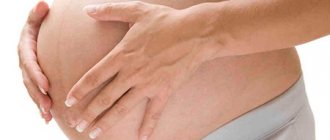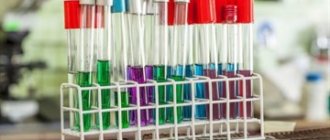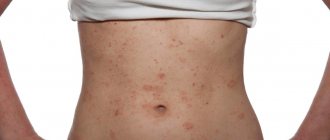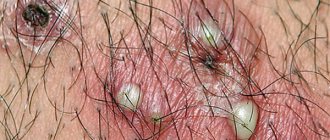Why do my nipples peel? For a variety of reasons, and this is one of the very common problems among women: it has nothing to do with the age or condition of the woman. Regardless of the reasons that caused peeling nipples and itching, you should seek medical advice to determine the causes. If your breasts are peeling, you should tell your mammologist or gynecologist.
Peeling is not always related to the development of serious pathologies. Often, the fact that the breast is in this state should be considered an independent phenomenon that does not require special therapy. However, if such a condition is accompanied by itching and greatly bothers the woman, then, of course, it would not hurt to seek medical advice.
Causes
When the nipples become sensitive in the early stages during pregnancy, this indicates that a natural hormonal change is occurring, which affects literally all systems in the woman’s body. Powerful hormonal production in the first stages is aimed primarily at preserving the fetus and providing the necessary amount of placental elements.
The hormone progesterone irritates the skin, causing either an increased amount of oil production or drying it out. However, apart from stretching and increasing sensitivity, the nipples do not change in any way until a certain point. Already at 6 months, a woman may notice other characteristic changes that appear suddenly.
Prolactin comes into play, which ensures not only swelling of the mammary glands, but also the formation of colostrum inside the alveoli. The formation of a thick fluid is also due to a number of changes in the mammary gland itself, which continues to grow and increase in size.
Colostrum has a creamy tint; when a drop of colostrum forms on the nipple, you can rub it over the skin, it will initially be a little sticky, but then the thick consistency will be absorbed without leaving a trace. Colostrum leaves greasy dark stains on fabric that are difficult to wash off.
Reasons why nipples appear dry during pregnancy:
- Excessive amounts of the hormones progesterone and prolactin. Such a formation is not dangerous, but can cause dry skin; the nipple of the breast, with a large number of nerve receptors, reacts especially sharply.
- Poor hygiene, using soap that dries out the skin. Frequent water procedures using soap (especially antiseptic and antibacterial), gels without moisturizing oils provoke drying of the surface layer of skin on the nipple.
- Irritating secretion from Montgomery's tubercles. The secretion, which is secreted during pregnancy not only from the nipples, but also from the tubercles, is located in the halo area and provides antibacterial protection and lubrication. It prevents the addition of bacteria and helps eliminate possible risks when swimming in open water. However, when the hormonal composition changes, which occurs around the 7th month, there may also be a change in the composition of the secretion, which now dries out the tip of the nipple.
- Allergy to irritating components, food, vitamins. In some situations, other than the nipple drying out, there are no manifestations indicating an allergy. Therefore, it is quite difficult to determine an allergic reaction.
Another common cause of excessive dryness of the nipple is the appearance of colostrum, which is initially released in small quantities and dries on the nipple, forming a film. Then, after some time, the woman will notice its discharge during the daytime, now it is enough to leave stains on the bra or underwear.
If a discharge of a greenish, transparent hue with reddish impurities is released from the nipples, this is a reason to consult a doctor. Such discharge during or without pregnancy is a dangerous pathological condition.
Treatment and home care methods
Moisturizing creams help relieve dry nipples
In most cases, people can relieve dry nipples and other symptoms with over-the-counter medications and home care methods.
If nipple chafing occurs as a result of sports training, intimacy, or other activities, treatment in such situations may include the following:
- rest from the activity that caused irritation;
- wearing softer materials;
- use of supportive bras;
- the use of moisturizing ointments or creams, such as lanolin;
- Using colloidal oatmeal, which can ease dryness and inflammation.
If a person suspects that the cause of dry nipples is thrush or cancer, then he should see a doctor as soon as possible. Antifungal creams help get rid of yeast infections, and your doctor may recommend specific treatments for breast cancer.
What to do
If, in addition to irritation and dry nipples, a woman is not bothered by other manifestations (pain, redness, red or green discharge), then all that can be done is to prevent the formation of cracks. Microcracks form in any case if the nipple constantly dries out. Therefore, to prevent painful treatment of a sore on the nipple, it is worth constant moisturizing.
If the gynecologist doubts the diagnosis, additional diagnostics may be prescribed in the form of ultrasound of the mammary glands and tests. There is no need to worry about this. Most likely, the doctor is playing it safe in order to exclude possible complications in the future. After all, pregnancy in this case acts as a risk factor in which the release of hormones occurs constantly, which means the risk of the formation of cysts and fibroids increases.
Oncology during pregnancy is diagnosed quite rarely, in only 3%. However, in all cases, this is preceded by precursors: increased temperature, discharge, retraction of the nipple inward.
Why is breast skin dry?
The situations in which the skin of the mammary gland dries out and peels off are quite diverse. These include both completely physiological and not requiring concern, and quite serious ones. And in order to understand the true reason for what is happening, it is best to consult with a specialist.
Common peeling factors
Dryness and flaking of the skin signals the unfavorable conditions in which it finds itself. And we are not talking about skin type, as such - there should be no such changes on the chest. It is necessary to look for the reason why the epithelium lacks moisture and becomes irritated. And most often common factors take part in this:
Changes in the breast and nipple area often accompany periodic hormonal changes observed during menstruation. Some women experience a feeling of dryness and tightness before menstruation, and others during ovulation, but this does not go beyond the physiological norm.
When breast skin suffers from dryness, it is first necessary to rule out common causes, and then conduct a more in-depth examination.
During pregnancy and lactation
When carrying a child, the body undergoes a significant restructuring of functional systems, which cannot but affect the condition of the skin and breasts. Even at the beginning of pregnancy, a woman may experience itching and dryness, which indicates metabolic changes. And with the onset of the third trimester, under the influence of hormones, the mammary glands begin to enlarge, which stretches the epithelium.
After the birth of a child, when lactation is just establishing, the nipples are subject to increased stress. The baby sucks intensively, but only colostrum comes out of the breast. And if we add to this the incorrect application, then minor injuries to the epithelium are practically guaranteed. Cracked nipples may well heal with a feeling of dryness and flaking.
Pathology of the mammary gland
The greatest concerns arise in situations where the presence of diseases affecting the skin of the breast or the mammary gland itself is suspected. The appearance of flaky spots, dryness, roughness or other symptoms of a similar nature should be grounds for excluding the following conditions:
- Contact dermatitis.
- Neurodermatitis.
- Psoriasis.
- Follicular hyperkeratosis.
- Oncological processes.
And if skin diseases affecting the breast do not pose a serious danger, then if a malignant tumor is suspected, you must be extremely careful. It is better to double-check the diagnosis by undergoing an in-depth examination.
Pathological processes require careful differential diagnosis and clarification so as not to miss dangerous conditions.
Recommendations
Important recommendations from a therapist, obstetrician and gynecologist in most cases concern proper nutrition, enriched with vitamins and microelements, as well as a proper lifestyle. Women who smoke before pregnancy or during pregnancy risk complications such as dry nipples, allergies and irritations on the skin of the mammary glands. Nicotine dries out the skin, making it thinner and more susceptible to external factors.
It is worth undergoing an additional consultation with an endocrinologist to rule out diseases of the thyroid gland, pancreas and adrenal glands. These organs can affect pregnancy and the production of hormones, which causes a change in the qualitative composition of secretions from the breast in later stages .
How to get rid of peeling?
Breast flaking can be prevented if you provide your mammary glands with proper care. It is very important to wear quality underwear. Bras made from synthetic fabric contribute to the development of allergic reactions, which are manifested by peeling.
The main reason for peeling of the skin of the mammary glands is loss of moisture and dryness. You can save your breasts from it using basic rules. For example, you can refuse to use soap and aggressive cosmetics that dry out the skin. You can replace conventional care products with gentle gels and mousses. You can prevent the problem by regularly using moisturizing creams containing hydrocortisone.
Homemade masks are used to eliminate peeling.
- Dairy. To prepare this mask you need oatmeal, which needs to be boiled in milk, then add a little honey and butter. Apply the resulting mixture to the problem area, leave for a few minutes, and rinse with warm water.
- Oatmeal and vegetables. Grind oatmeal in a coffee grinder, add grated carrots, apply to the mammary glands for 10 minutes.
- Banana. Chop a banana, add a tablespoon of olive oil, apply the mixture to the problem area, leave for 15 minutes.
These home remedies help not only eliminate flaking, but also saturate breast skin cells with nutrients, moisturize the skin, tighten it, and add elasticity. If such problems arise, you need to act comprehensively, in particular, take vitamins, eat right, and provide adequate breast care. But the best solution is to contact a specialist, get tested, and take measures to prevent breast diseases.
Folk remedies
The use of folk remedies to eliminate dry skin of the nipple area is aimed at ensuring normal pH of the skin. For this use:
- moisturizing the nipple with sour cream, kefir;
- breast mask using olive, peach and grape oils in equal proportions;
- sea buckthorn oil for application to the sponge and under the pad at night on the nipple.
All traditional methods used must be previously agreed with the obstetrician; there may be contraindications.
The skin of the breast is especially sensitive and delicate, so it is in this place that dryness, redness and itching most often occur in many women of different ages. If the skin on your nipples begins to peel and itch, you should not hesitate to see a doctor. The sooner a diagnostic examination of the mammary glands is carried out, the easier it will be to overcome the problem without consequences.
What does fungus look like under the breast?
The fungus is more likely to annoy women with large busts.
The fungus under the breast has several stages of development. Each of them is characterized by certain signs that make it clear to a person that something is wrong with his health. The disease has the following stages:
- Easy. The fungus is just beginning to develop, so its only signs are burning, itching and slight redness in the affected area;
- Average. Symptoms become more pronounced and uncomfortable. At this stage, there is a violation of the integrity of the skin under the mammary glands. The person begins to experience pain;
- Heavy. Severe pain appears. On the skin you can see multiple open wounds, which gradually turn into ulcers.
Symptoms of a fungal infection appear gradually. If a person is attentive to his own health, he will notice its first signs at the initial stage and immediately begin treatment.
Fungal infection develops gradually
Causes of peeling
Dry skin on the nipples of the breast can appear not only due to simple reactions of the body to an irritating factor. If the skin on your mammary glands suddenly begins to peel, this may be a clear sign of the presence of dangerous diseases in the body. In this case, you must follow your doctor's advice. It must be remembered that it will be easier to overcome the disease than to treat its consequences afterward.
There are a large number of reasons why the skin on the nipples begins to peel. Dry skin in the area of the nipples and other parts of the body may appear due to a small amount of vitamins entering the body, allergic reactions, or serious diseases that require emergency treatment.
Women, due to their special physiological structure, more often suffer from pathologies in the chest area than men. To understand why peeling juices appeared on the skin, you need to consider the main factors that influenced the development of such a disease.
Physiological changes during pregnancy
Nipples peel during pregnancy with the appearance of characteristic cracks and pain on the skin due to a violation of the integrity of the skin. Dryness and peeling of the nipples when carrying a child can occur due to:
- reduced levels of vitamin A and vitamin B complex in the body;
- imbalances and hormonal changes;
- inflammation and irritation of the skin (this occurs due to the fact that a special juice, colostrum, is secreted from the nipple from time to time).
Is treatment necessary for this condition?
If the nipples begin to become crusty, do you need to do something to eliminate it and what treatment methods should be used?
Doctors note that if it is present in small quantities and is not accompanied by clinical symptoms, there is no need to worry. To reassure yourself, it is better to visit a mammologist and, if necessary, undergo an examination. You should immediately contact a specialist if the following manifestations are present in the mammary glands:
- Pain.
- Hyperemia.
- Seal.
- Edema.
- Redness.
- Bad feeling.
- Enlarged lymph nodes.
- Hormonal disorders.
- Failure of the menstrual cycle.
- Discharge from the nipples outside of lactation.
So, how to remove crusts from the nipples after the diagnosis has been made and the provoking factor of the symptom has been established? The features of the treatment method depend on the exact cause that led to their appearance:
Pathological condition Features of treatment Hormonal imbalance Hormones are prescribed, which are carefully selected by the doctor. Mastopathy Hormone-containing drugs and herbal medicines are recommended. Mastitis Antibacterial drugs are prescribed, and in advanced cases, surgical treatment is performed. Dermatitis, eczema and other skin diseases External medications with anti-inflammatory, moisturizing and regenerating effects are prescribed. The use of local hormonal drugs and absorbents to reduce the harmful effects of toxins, as well as vitamin complexes, is indicated. Furunculosis To eliminate abscesses, antiseptic agents with a drying effect are used. Multivitamin therapy is recommended to strengthen the immune system. Rapidly enlarging tumors require surgical removal of tumors with further drug therapy. Endocrine problems A comprehensive treatment approach is prescribed. Pregnancy and breastfeeding You should get rid of crusts through regular hygiene of the glands or use special breast pads. If crusts are normal, then no special treatment is required
If there is a significant leakage of milk, it is important to remove the residue in a timely manner, thereby preventing it from drying out and turning into a crust. It is necessary to clean the nipple area using special non-aggressive means. Traditional cosmetic creams are not suitable for this, as they may contain substances that are dangerous to the child. Wounds and cracks must be washed with disinfecting solutions (peroxide, chlorhexidine, etc.) and treated with ointments with regenerating properties.
Among the healing compositions that have proven themselves well:
- Bepanten.
- Streptocide ointment.
- Sea buckthorn oil.
- PureLan.
- Solcoseryl.
- Panthenol.
How is diagnostics carried out?
Only an experienced doctor can understand exactly why peeling of the skin on the chest occurs. In addition to collecting anamnesis and examining the glands, you need to undergo a number of additional procedures. An accurate diagnosis of the lesion can be made using:
- general and biochemical blood test;
- studies of the amount of hormone in the patient’s blood;
- breast mammography;
- scraping the skin from the affected area and carefully examining it under a microscope.
Based on all the collected results of the patient’s medical diagnosis, the doctor can confirm the diagnosis and prescribe the correct and effective treatment for the disease in a particular case.
Prevention of gland diseases
If the skin begins to peel off severely and peel around or near the nipples, then prevention and treatment will mainly depend on the factors that influenced the development of the disease.
A woman should closely monitor the health of her entire body, eat right, eat only foods enriched with vitamins and microelements , exercise regularly and continue to keep her body in good condition, avoid all kinds of stress and overwork, find time for proper sleep and rest.
If we talk about the condition of the breast, then you need to follow some recommendations from your attending physicians:
- closely monitor the level of hormones in the body;
- if necessary, you need to increase the level of minerals and nutrients in the foods you consume;
- independently monitor the condition of your breasts and undergo regular examinations;
- during pregnancy, you need to wear a special breast-supporting bra;
- apply only tested cosmetic products to this area;
- when feeding a newborn with milk, you need to learn how to apply it to the breast correctly;
- eliminate the use of various food additives and medications or at least minimize it;
- go for an examination with a gynecologist every year;
- Rinse the laundry thoroughly after washing with special chemicals;
- choose only high-quality cotton underwear that will not cause irritation to the skin.
Sensitive skin in the chest area needs proper and careful care, especially as you age. You should try your best to avoid negative effects on the breasts and carefully monitor their condition.
The effect of pregnancy on the mammary glands
A woman’s breast is a hormone-dependent organ, so the onset of pregnancy leads to an immediate change in them.
The birth of a new life in the body requires the start of activity of the mammary glands, which are intended to feed the baby after his birth. The changes are individual for each expectant mother, sometimes they are quite significant. Any deviations from the norm require examination by a doctor.
Breast changes occur almost immediately after the embryo implants in the uterus. A woman may notice its soreness and increased density even before she learns about her new position. At a period of 4-5 weeks, almost every expectant mother already feels the beginning of changes in the mammary glands, and by the end of the first trimester, new sensations arise in everyone.
Even before the delay of menstruation, most women notice a change in the color of the nipples, their size, as well as halos around them. This is one of the first signs of hormonal changes that occur during pregnancy. The changes are not dangerous for the expectant mother and fetus; they are a natural process.
What they look like
The appearance of the mammary glands during pregnancy undergoes pleasant changes:
- breast volume increases;
- the skin becomes firmer and more elastic.
The nipples do not change for the better: they become darker, rougher, and sometimes peeling occurs. This is necessary to prepare for the process of breastfeeding as intended by nature.
We invite you to familiarize yourself with Atopic dermatitis during pregnancy: treatment, diet and reviews
The color of the areola usually changes with the shade of the nipples. At the beginning of pregnancy, the halo remains unchanged, but towards the end of the pregnancy it acquires a brownish-purple hue. Some women experience no such changes and the appearance of their breasts remains unchanged. Often, at the beginning of pregnancy, the halo becomes a pale purple hue, which is not considered a pathology.
The release of colostrum often occurs in the 3rd trimester, as the body prepares the first nutrient fluid for the baby. In some cases, the appearance of nipple discharge can be observed by the end of the 11th week, which is also not a pathology. You should definitely inform your doctor about the appearance of colostrum so that he can examine your breasts.
Montgomery tubercles are small bulges on the halo, not exceeding 1-1.5 mm in diameter. They often become pregnancy companions and often remain with the woman after childbirth.
Their appearance can be detected at any time, most often in the second trimester. This is a normal phenomenon and does not require special attention. It is prohibited to try to squeeze out these formations or remove them in any other way.
This can lead to serious consequences.
Changes in the nipples occur with every pregnancy, but the timing of changes in color and sensitivity may vary. The process occurs individually for each woman; if in the first pregnancy darkening and soreness appeared immediately, then in the second pregnancy symptoms may appear closer to the 2nd trimester.
In late pregnancy, the skin of the nipples becomes significantly rougher, sensitivity decreases, and colostrum may appear. The tubercles can cover the entire surface of the areola, reaching 12-15 on each breast. Any changes should be shown to the doctor managing the pregnancy. Severe nipple pain at the end of pregnancy should alert the expectant mother.
Immediately before childbirth, nipples usually do not bother the expectant mother. Their appearance remains unchanged since the beginning of the last trimester, and the pain and discomfort goes away. Closer to the birth of the baby, you should start hardening them - walking around the house without underwear more often, taking air baths. A contrast shower will help prepare the nipples and breasts as a whole for feeding.
The change in color of the nipples is caused by the influence of hormones, the concentration of which increases during pregnancy. Constant changes in hormonal levels lead to the fact that as the fetus grows, the nipples acquire a purple tint and turn pink again several times.
During multiple pregnancies, changes can be of the most unexpected nature, since the level of hormones is much higher.
In some cases, a woman does not notice changes in the appearance of her nipples even as labor approaches. This is also a variant of the norm and does not require additional examinations.
Immediately before childbirth, pain rarely occurs; by the end of the third trimester, hormonal levels stabilize. Discomfort may occur if the breasts begin to become intensely engorged. In this case, it is recommended to use moisturizing creams to prevent stretch marks. Painful sensations occur only in the 1st trimester.
Discharge from the nipples should normally be transparent in color, with a possible white tint. This is what the colostrum the baby will receive immediately after birth looks like.
The appearance of liquid of green, brown and other shades is considered pathological, especially when a foul odor is attached. Yellow discharge can also be considered normal, especially if this is not the woman’s first pregnancy.
Does it always get dark
All changes during pregnancy are individual, so darkening of the nipples does not occur in every woman. The color change can appear at different stages and also vary in intensity for each expectant mother. With the natural dark shade of the nipples and areolas around, during pregnancy they can only slightly change their shade.
Before childbirth, the discharge often becomes profuse; in some cases, a woman may need special pads in her bra. Discharge is often noticed in the evening, during rest. Signs of normal nipple discharge:
- transparent with a white or yellow tint;
- no unpleasant odor;
- discomfort is minimal, there is no unpleasant sensation during discharge.
Squeezing out colostrum on your own is strictly prohibited; this can cause breast problems, blockage of the ducts and stimulate uterine contractions. The doctor leading the pregnancy should periodically examine the woman’s breasts and rule out pathologies.
The release of colostrum is not a necessary stage of pregnancy. For some women, it appears only after the birth of the baby.
In some cases, the fluid secretion is so small that the expectant mother simply does not notice it.
Before the baby is born, the expectant mother can regularly observe the release of a few drops to several grams of colostrum. Its amount should not be adjusted independently; to prevent discomfort, it is enough to use special inserts.
It will not be possible to determine the approach of childbirth by the condition of the nipples. Their change and the appearance of colostrum are in no way related to early delivery.
After the baby is born, the breasts are already ready for feeding; colostrum appears immediately after the baby is latched. Often the size of the mammary glands increases significantly by 2-3 sizes, which is directly related to breastfeeding.
Stretch marks that appear during pregnancy become paler over time and sometimes disappear completely. To maintain breast elasticity, it is necessary to end breastfeeding correctly; this will also help maintain the health of the mammary glands. Depending on the woman’s physiology, the following changes may occur to the breasts after childbirth:
- its increase will continue after feeding is completed;
- the skin may become loose and inelastic;
- elasticity often disappears;
- in some cases, the breasts after breastfeeding are significantly reduced.
All these changes are normal variants that do not require additional examination. You should be concerned if, after pregnancy, lumps appear in the breasts or if strange discharge from the nipples bothers you.
Nipple changes during pregnancy may not always be considered normal. The appearance of itching, white or dark plaque, sharp lightening of the nipples or the appearance of an unpleasant odor are pathological phenomena that should be immediately reported to the doctor managing the pregnancy.
Changes in the nipples during pregnancy occur in almost every expectant mother and do not threaten her health, except in rare cases. With repeated pregnancies, changes usually appear earlier, and their intensity depends on hormonal levels. Changes take place after the birth of the baby and the end of breastfeeding, when hormone levels return to normal.
Treatment of breast lesions
The moment a woman notices irritation in the mammary glands, she should immediately go to see her doctor. Only a specialist in this case can understand the cause and begin proper treatment of the pathology. In this case, it is not recommended to use folk remedies, as this can only negatively affect the patient’s condition.
The only thing that can be done in this case, with the permission of a physician, is to lubricate the nipples with a special chamomile decoction , if the woman is carrying a child or breastfeeding. All other treatment methods and drugs are strictly prohibited. There is no need to try to use scrubs: it is simply impossible to eliminate damage to the skin with such means; in addition, they can only provoke greater irritation.
Only a timely visit to the doctor can improve the condition. First, you should make an appointment with a gynecologist, he will conduct an initial examination and, if necessary, send you for a consultation with a dermatologist or mammologist.
Author of the article: pediatrician Valentina Razheva
Vitamin complexes for healthy skin
Peeling of the skin under the breasts and not only is provoked as a result of a lack of vitamin B groups, which regulate metabolic processes in the body.
Therefore, doctors, when prescribing multivitamin courses, make their choice in favor of those that contain this particular group of vitamins:
- "Revalid". The average cost is from 300 rubles. The most effective drug for the treatment of skin diseases, in addition to B vitamins, contains some minerals and amino acids. In the treatment regimen, drink 2 capsules 3 times a day. In case of prevention, it is enough to take up to 2 capsules per day;
- "Vitasharm". The average cost is from 150 rubles. Vitamins A, group B and PP, which are part of the complex, have a quick healing effect on the skin. It is enough to take 1 tablet per day for a month;
- "Revivona". The average cost is from 320 rubles. The complex is similar to the previous one, but with an expanded list of vitamins. Provides continuous nutrition to skin and hair. Take 1 tablet 3 times a day for children and up to 2 times a day for adults. Your urine may turn bright yellow, but this is completely normal.
Peeling skin during pregnancy: reasons
During a wonderful time of pregnancy for every woman, the expectant mother undergoes a serious restructuring of her body. It adapts as much as possible to the needs of the growing baby, and in the last trimester prepares for childbirth. A pregnant woman experiences external and internal changes.
And pregnancy also means, one way or another, stress, poor health, and fatigue. And all these factors affect the condition of the skin not in the best way.
Why does skin peel during pregnancy?
- Natural need for water
Expectant mothers need to take into account that the volume of liquid consumed now goes not only to her needs, but also to the needs of the baby. From the second trimester, amniotic fluid will begin to form, and the lack of water in the body can become noticeable and manifest itself, among other things, as the problem of flaky skin.
When a pregnant woman’s figure begins to change, her breasts enlarge, her hips expand, her belly with the baby inside grows, and her skin stretches. This process may be accompanied by itching and flaking of the skin of the abdomen. During pregnancy, breasts often peel off due to secretions and colostrum released from the nipples.
Lack of vitamins and microelements
The expectant mother should carefully monitor her diet and eat enough nutrients for the health of her unborn child. Vitamin deficiency, especially a lack of vitamins A, E, B, leads to dryness of the epidermis and is manifested by peeling of the skin of the face, hands and feet during pregnancy.
It's normal to feel anxious during pregnancy. But not in the case when stress is accompanied not only by psychological discomfort, but also by physical manifestations. When stressed during pregnancy, the skin on the arms and legs peels and severe itching occurs.
Insufficient hygiene, especially if pregnancy occurs in a hot climate and during the warm season, leads to skin irritation, dryness, and flaking.
Hormonal changes
As a result of changes in hormonal levels, the secretion of sebum, which is necessary for sufficient hydration of the skin, is disrupted. If the epidermis is excessively dry, peeling of the skin may begin.
Sometimes unwanted hormonal changes occur against the background of disturbances in the functioning of internal organs and systems. Pregnant women may experience abnormalities in the functioning of the endocrine system, which lead to a decrease in estrogen levels (this hormone, among other things, is responsible for the good condition of the skin). With hypothyroidism, the thyroid gland begins to produce less hormones, which is also reflected in the form of peeling and itching of the skin. Lack of prolactin (the hormone plays an important role during lactation) is manifested by increased sweating, which often causes itching and peeling of the skin of the abdomen and body during pregnancy. Also, a large group of causes of skin peeling are specific dermatoses of pregnant women, manifested by itching, rashes, dryness and flaking of the skin.
Breast care during pregnancy: 7 rules and rating of 4 cosmetics
Not a single cell of the female body remains unaffected by changes during pregnancy. And the skin, as a hormone-dependent organ, also experiences changes.
- Those who suffered from oily shine and acne may get rid of them. Skin care during pregnancy
- But sometimes acne may appear or get worse. The male hormones androgens are to blame for this, the level of which increases during pregnancy.
- In the second trimester, some expectant mothers develop pigment spots (chloasma) on their face and neck - no measures need to be taken other than sun protection and masking with foundation; hyperpigmentation will go away after childbirth and breastfeeding.
- With a deficiency of vitamins and microelements, there are “seals” in the corners of the lips and peeling of the skin.
- Swelling and circles under the eyes are possible.
- Toxicosis provokes dehydration, which means it has a bad effect on the condition of the skin.
- Local immunity decreases, so inflammation is possible on the face. Not a single cell of the female body during this period will remain aloof from the process of changes. © Skin.ru
A potential threat to the skin during pregnancy is stretch marks. Often the tendency to them is determined genetically. To avoid stretch marks, apply the rich cream daily to problem areas (stomach, chest, thighs).
Here are the most important recommendations.
- When choosing cosmetics, focus on your skin type, but keep in mind that it may change during pregnancy.
- Choose hypoallergenic, fragrance-free products, as expectant mothers sometimes experience changes in their perception of odors and immune response.
- Do not experiment with new products and unfamiliar ingredients.
- To combat stretch marks, use products for firmness and elasticity of the skin of the body (in fact, this is the purpose of creams for stretch marks).
- If you have skin problems, consult your doctor. When choosing cosmetics, be guided by your skin type; it may change during pregnancy. © Skin.ru
“Body products should primarily contain moisturizing agents: tissues saturated with moisture are more elastic and not damaged. Creams with hyaluronic acid, chitosan, aloe and algae extracts will be useful.”
“During pregnancy, the breasts change as they prepare for lactation,” explains Elena Alekseeva, Biotherm brand expert.
“There are no muscles in this area, so the ligaments begin to stretch, which means support is important. Choose a bra that will relieve the extra pressure and firm up your breast skin.
Formulas with vitamins A and E, as well as moisturizing components, plant oils, and seaweed extracts will help with this.”
By preserving your breast skin, you help maintain its shape. Here's what it takes.
- Wear a comfortable, securely supportive bra with wide straps, it will come in handy even at night.
- Use cosmetics to moisturize the skin and increase its elasticity.
- Do special exercises, they can be found on the Internet.
The most famous of them is “Prayer”.
- Place your palms in front of your chest, placing your elbows parallel to the floor.
- Press your palms against each other.
- Hold the position for a few seconds, then relax your arms.
- Repeat up to 20 times.
Massaging nipples to strengthen the skin is a very harmful activity. Instead of preparing for feeding, it causes contractions of the uterus, which can lead to premature birth.
Rub the skin of the chest with a rough mitten. Such manipulations will not make the skin more elastic, they will only injure it.
Rub the cream in too vigorously. When applying the product to the breast area, support the breast from below with one hand, and with the other, carefully apply the cream in a circular motion from the nipple to the base.
Washing nipples with soap and treating them with brilliant green during breastfeeding is a barbaric expense of the past. The microflora of the mother's nipple is clearly more beneficial to the baby than detergent.
Choose hypoallergenic, fragrance-free products, as odor perception and immune response may change. © Skin.ru
If cracks appear on your nipples, use a nourishing healing cream; your doctor will recommend it.
Thanks to niacinamide, shea butter and the Aqua Posay Filiformis component, the product gently cleanses the skin, soothes it, and restores the protective barrier.
Serum for bust and décolleté area Super Bust Tense-In-Serum, Biotherm
Red algae (chondrus crispus) and hyaluronic acid tighten the skin, making it firm and elastic. The serum can be used during pregnancy, but not during breastfeeding.
Milk for dry skin of babies, children and adults Lipikar Lait, La Roche-Posay
This hypoallergenic product can also be used during breastfeeding - the main thing is to make sure that it does not come into contact with the nipple. The formula with shea butter and vitamin B3 nourishes and moisturizes the skin, enhancing its protective properties.
Superbly Restorative Argan Body Lotion, Kiehl's
Argan and orange oils, argan leaf extract and squalane increase skin firmness and elasticity. Not recommended for use during breastfeeding.
Source: https://skin.ru/article/uhod-za-grudju-vo-vremja-beremennosti/
Peeling nipples during pregnancy
Already in the first weeks, many pregnant women notice changes in their breasts. She becomes too sensitive, the mammary glands become enlarged, and discharge from the nipples appears. And at the same time, the nipples can itch and peel. This is not a pathology, but one of the most common conditions found in pregnant women.
What causes peeling of the breasts and nipples?
- With nipple discharge
Even during pregnancy, the body begins to prepare for the birth of a child and the upcoming feeding. Small white bubbles appear on the nipple halo, secreting secretions. It lubricates the nipple to protect against dryness.
Excessive secretion and insufficient hygiene lead to irritation of the breast skin, itching, and peeling.
In the last trimester, colostrum begins to be released from the mammary glands (this is especially true for women who have previously given birth and have developed thoracic ducts). The liquid dries on the breasts, resulting in a feeling of tight skin, itching, and peeling in the nipple area.
With an allergic reaction
Increased skin sensitivity during pregnancy can cause allergic reactions to clothing, especially synthetic ones. On the chest, an allergy will manifest itself as itching, irritation, dryness and flaking. The same reaction can be caused by a hygiene product: shower gel or body cream.
With increasing breast size
During pregnancy, the mammary glands enlarge and in the last trimester they are filled with milk for future feeding. With breast enlargement, the skin stretches quickly and unevenly, which causes itching, dryness and flaking.
What to do if your nipples peel during pregnancy?
To eliminate unpleasant sensations, careful hygiene and care is sufficient. Breasts and nipples should be washed regularly with warm water (can be wiped with a damp towel) and wiped dry.
To prevent allergies, it is better to choose cotton underwear and change your bra size in a timely manner.
Lubricate the skin around the nipples with a hypoallergenic remedy for dry skin. La-Cri MAMA emulsion is perfect for these purposes. It not only moisturizes and softens the skin, but also effectively fights the formation of stretch marks that can appear on the breasts as a result of breast enlargement.
If peeling nipples during pregnancy are very disturbing, does not go away even with proper care, or is accompanied by other symptoms: chest pain, change in skin color, increased body temperature, purulent or bloody discharge from the nipples, general malaise - this is a reason to urgently consult a doctor.
Why do nipples peel and how to deal with it?
Why do my nipples peel? For a variety of reasons, and this is one of the very common problems among women: it has nothing to do with the age or condition of the woman.
Regardless of the reasons that caused peeling nipples and itching, you should seek medical advice to determine the causes.
If your breasts are peeling, you should tell your mammologist or gynecologist.
Peeling is not always related to the development of serious pathologies. Often, the fact that the breast is in this state should be considered an independent phenomenon that does not require special therapy. However, if such a condition is accompanied by itching and greatly bothers the woman, then, of course, it would not hurt to seek medical advice.
Pregnancy and lactation
Peeling of the nipples and the area around them is one of the most common problems that a woman faces during pregnancy. During this period, many women experience dry nipples and complain of dry abdominal skin.
Quite often, peeling is observed on the skin of the nipples and halos. As a rule, this phenomenon occurs in the last months of pregnancy after the 30th week. Although rare, it also happens that the phenomena described above are observed in the first 3 months of pregnancy.
This phenomenon occurs because a pregnant woman's breasts increase in size, causing the skin to stretch.
The reason for such changes may lie in the hormonal changes that occur in the body of a pregnant woman. A pregnant woman's breasts not only swell, but during pregnancy the nipples begin to secrete colostrum.
Therefore, sometimes peeling skin on and around the nipples can be explained by the remnants of dried colostrum.
The fact that the nipple is peeling can be explained by a phenomenon such as lactation. The process of feeding a baby, especially at the initial stage, contributes to excessive stress on the nipples.
The strongest negative impact on nipples occurs when the mother incorrectly attaches the baby to the breast, as a result of which the baby can bite the nipple or suck the breast not with the tongue, but by straining the lips, which leads to stretching of the nipple.
The menstrual cycle also affects the condition of the breast due to changes in hormonal levels. For some representatives of the fair sex, the skin of the nipples stretches and peels before the start of the menstrual cycle, and for others - at the time of ovulation. In female adolescents, the skin of the nipples and areolas may also peel off during the formation and growth of the mammary gland.
Allergies and dermatitis
The skin of the breast may also be subject to changes due to an allergic reaction, for example, with hives. In this situation, a flaky nipple along with the manifestation of itching combines the appearance of red rashes and blisters, similar to a mosquito bite, throughout the body.
As a rule, food or medications can trigger an allergic reaction, including coffee, citrus fruits, strawberries, antibiotics and vitamin preparations.
As for an allergic reaction, it can be caused not only by consumed substances, but also by contact. Body and hair hygiene products, washing powders, and fabric softeners can cause an allergic reaction.
An allergic reaction to synthetics or wool is very common. As a rule, in such a situation, the nipples can dry out, which contributes to the appearance of peeling not only in this area, but throughout the body in general; Spots, sores, or itching on the skin may appear. If it is your nipples that are affected, then you may need to think about changing your bra.
There are cases when contact dermatitis occurs. Then the damage to skin areas is caused not by allergies, but by some mechanical causes, for example, rubbing the skin of the nipples along the seams of the bra, rough fabrics or chemicals. In such a situation, a woman will not only experience peeling and dry nipples, she may suffer from burning pain, rashes or even local swelling.
Other reasons
It is quite rare to see a situation where flaky skin and crusts on the nipples, especially if there is discharge from the crusts, indicates the development of some serious pathology. In medical practice, there is a type of cancer in which the nipples are affected. This is the so-called Paget's disease.
If such a disease appears, then along with peeling and crusts on the nipples, small cracks with dark-colored veins are observed. In this case, the shape of the nipples or their structure may change, which can be noticed during palpation. Quite often with this pathology, concavity of the nipples is observed.
Sometimes peeling can be explained by a lack of moisture in the body. As a rule, when the body becomes dehydrated, the skin and mucous membranes begin to dry out, resulting in peeling. Quite often this phenomenon can be observed in the summer. Dehydration can be caused by excessive drinking, diarrhea, or vomiting.
The unsatisfactory condition of the skin can be explained by a deficiency of certain microelements in the body, i.e. hypovitaminosis. Along with peeling skin, significant fatigue, severe hair loss, brittle nails and other problems with the nail plate may occur.
Prevention and treatment
Here are some tips on how to deal with peeling nipples:
- If peeling is caused by pregnancy, then in this case, to combat peeling, it is recommended to lubricate the skin of the nipples with baby cream, olive or sea buckthorn oils, hypoallergenic body milk, and moisturizing lotion. At the same time, lubricate the skin of the nipples several times throughout the day, if necessary. If the proposed measures do not have the desired effect, you should consult a doctor.
- Experts recommend performing air and water procedures for the chest. Rinsing with cool water and rubbing the breasts with a terry towel is an excellent way to prepare the nipples for feeding. As you know, regular soap dries out the skin. That is why it is recommended to use special cream soap or baby soap.
- If peeling of the skin of the nipples is a form of an allergic reaction, then it is necessary to exclude from the diet foods or medications that contributed to the occurrence of such a reaction. In this case, you should also take antihistamines.
- If peeling of the skin of the nipples is caused by allergic dermatitis, then it is necessary to replace synthetic or woolen underwear with natural ones, and use special baby powders for washing clothes.
- In order to exclude the possibility of developing serious pathologies characterized by peeling of the nipples, it is necessary to undergo an ultrasound examination of the breast or mammography, and then be examined by a mammologist or oncological surgeon. This recommendation is especially relevant for women over 40 years old.
- If peeling is a sign of dehydration, then you should drink at least 2 liters of clean water per day. It is recommended to exclude strong coffee and sweet carbonated drinks from your diet. These drinks help remove fluid from the body.
- In cases where peeling is caused by hypovitaminosis, it is necessary, after consulting a doctor, to take multivitamin complexes or preparations containing individual vitamins. It should be noted that the effectiveness of multivitamins has not been proven to date. Therefore, along with their intake, it is necessary to provide a balanced and nutritious diet so that the body receives the necessary microelements in sufficient quantities.
In conclusion, it must be added that each woman is obliged to closely monitor her health and not ignore any emerging signs that may later turn out to be symptoms of serious pathologies.
You should undergo regular medical examinations in order to exclude and prevent possible diseases.
We should not forget that a woman’s health is the key to the quality of not only her life, but also the life of her children and family as a whole.
The video details the three most common causes of itching.
Source: https://grud.guru/simptomy/prochee/pochemu-shelushatsya-soski-i-kak-s-etim-borotsya.html
Experts' opinion
An important component of the emulsion is licorice extract, the anti-inflammatory activity of which has been clinically proven as part of a study of the biological activity of aqueous extracts of chamomile flowers, raspberries, licorice rhizomes and their combinations at the Bashkir State University.[1]
A clinical study of La-Cri products proves their high effectiveness, safety and tolerability for daily skin care of adults and children. The products are recommended by the Union of Pediatricians of Russia and are safe for the delicate skin of the expectant mother.
Consumer Reviews
Nikandra777 (irecommend.ru)
“The emulsion is designed to combat stretch marks, when I read about the effect of this cream, it was stated that it also has an anti-allergic, moisturizing and antipruritic effect, I realized it can be useful not only for stretch marks, but also for my big problem, this redness on the face.
There is quite a lot of cream in Sasha, so I was able to understand the effect; this was enough for me to use Sasha four times. I applied it to my face once a day in the evening, and to one stretch mark on my body. Consistency: pleasant, delicate, completely non-sticky and does not cause discomfort.
The color of the cream is white.
Smell: very pleasant, gentle, non-intrusive smell, it’s rare for me to like the smell. Maybe this is because this cream does not contain dyes or fragrances.
Ingredients: also good quality, there are a lot of oils in the composition, but the cream does not clog pores, I say right away. Price for full size: 280 rubles.
The result and my opinion: I really liked this cream, I didn’t see any effect on stretch marks, I think this is a cream for preventing stretch marks, for example, when you are actively losing weight or just keeping your body in good shape. And on the face the effect is amazing. The cream does not cause redness, does not sting, and perfectly moisturizes the skin. Makes her look healthier and more well-groomed. I liked the result, I would buy this cream again for use on the whole body and face, for dryness, redness and for elasticity. I like this company, it makes quality products, this is not the first time I understand this.”
Aninasy (irecommend.ru)
“I didn’t start using this product in the first months of pregnancy, which I regret not because stretch marks appeared, but because I used an expensive product when I had a good budget analogue under my nose. Everyone knows the problems of pregnancy - red stretch marks, and to avoid them, or at least not to increase them, you need to use specialized cosmetics. The product is produced in Russia, in St. Petersburg, the packaging is entirely in Russian, which is good news. The emulsion has a pleasant and unobtrusive smell; from a distance it reminds me of a sweet tangerine. It itself is opaque white in color and, thanks to its moderate-liquid consistency (very similar to lotion than milk), is quickly absorbed. I need 2-3 pumps at a time to completely cover my stomach. About the same amount for the thigh area, I just pay more attention to the tummy. The packaging doesn’t say anything about the chest area, there are no contraindications or indications, so sometimes I apply it too. There were no rashes. I use it daily: morning and evening, on clean skin after a shower, with massaging movements, it takes about one minute. The composition contains natural ingredients: various oils, the benefits of which I think everyone, in principle, knows...
I think that the composition is more than harmless, since all dyes and fragrances are contraindicated for pregnant women. This product did not cause irritation or any allergies for me; on the contrary, when I scratched my stomach (for example, if my clothes were itchy or it was simply itching incredibly as it grew), and then applied this emulsion, the skin calmed down and the red stripes quickly disappeared until next application. After use, the skin is well hydrated, velvety, smooth and soft to the touch. In the last month, you want to scratch your belly almost constantly, because the baby is actively growing and sometimes the skin simply “can’t keep up” with it. This is the only product that saves me, it soothes my skin. I like that after use there is no sticky layer or film left, and also if the product is applied in a hurry and does not have time to be absorbed, then there are no greasy marks left on the clothes, or rather, there are no traces or smell left at all. I would like to note the convenience of using a bottle with a pump: the product can be used until the very last drop, no excess air gets into it, therefore the product retains all its beneficial properties longer and does not oxidize. And this is very important, because I still wouldn’t say that it is too cheap. Microbes that can be introduced by reaching into the container with your fingers are also kept out. For me, when choosing creams, this is a key point. I bought it at the pharmacy for 430 rubles, I think this is the average price in this segment of goods. However, thanks to its economical use, I have been using it for 3 months now, and I still have half of the bottle left, which can be used after childbirth, since the product is also suitable for nursing mothers. If you wish, you can leave it altogether, since the shelf life is two years. It should be remembered that the product is only for adults, although it is not allergenic. The design of the bottle is ordinary; the manufacturer adheres to minimalism in the color scheme: white, light green and blue. All of them are not irritating to the eyes. The bottle is tall, making it inconvenient to carry in your purse if you need to go somewhere and have to pour it into a small container. This is easy to do, because by removing the green cap, you can easily unscrew the pump and pour the required amount.”
__________________________________________
Peeling of hands during pregnancy
Dry skin occurs on the hands more often than on other parts of the body. This is due to the fact that hands are exposed to constant external influences and are often not protected from the sun and chemicals. The situation worsens during pregnancy, and the skin begins to peel off on the hands and fingers even more actively, up to the formation of cracks and wounds.
Dry hand skin requires a special product, for example, La Cree cream for dry skin, which perfectly softens and nourishes the skin, protecting it from peeling and drying out. And if your hands are already chapped, the cream will have an anti-itching effect, relieve redness and peeling.
Peeling skin during pregnancy: what to do
- Cleanse skin thoroughly. This is especially true for the breasts and nipples, where secretions are constantly released.
- Drink enough fluids.
- Use special products for dryness and stretch marks, which contain a minimum of chemicals.
- Eat right, take vitamins.
- Wear clothes made from natural fabrics.
It should be understood that if peeling is caused by any abnormalities in the body, eliminating only external manifestations will not be effective. If such disorders are diagnosed by a gynecologist after a regular examination, he will refer the pregnant woman to specialized specialists.

